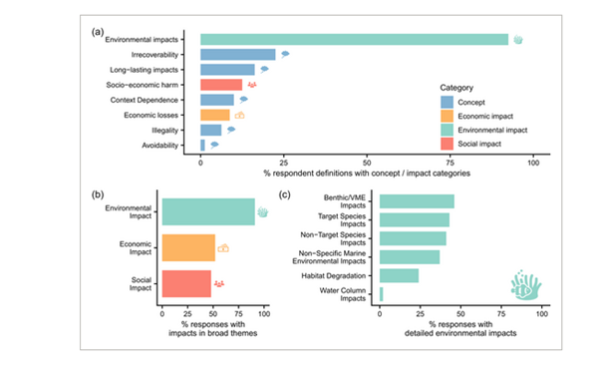Although established indicators enable managers to monitor progress toward ending “overfishing” and “Illegal Unreported or unregulated (IUU) fishing”, there is no globally agreed definition or indicator for “destructive fishing”. The FAO Code of Conduct for Responsible Fisheries (CCRF) recommends: “States should prohibit dynamiting, poisoning and other comparable destructive fishing practices” (art. 8.4.2)”. However, a review of academic literature, media articles, and policy documents (published 1976–2020) showed considerable vagueness in how and when the term is used, including within five multilateral policy frameworks which refer to destructive fishing.
By synthesizing expert knowledge from individuals in diverse fishing-related fields, the authors of a paper published in Conservation Letters aimed to understand the utility of a definition, uncover consensus (or dissensus) on what constitutes “destructive fishing,” and propose a starting definition.
The project team received 80 responses from 32 nationalities spread across different areas of expertise: civil society/environmental NGOs (20%), academia (15%), government fisheries management (13%), and the commercial fishing industry (12%). Respondents noted experience in fishing gears or categories, most frequently trawls (54%), longlines (33%), and gillnets (29%). Most had experience in small-scale fisheries followed by industrial or commercial and some mentioned recreational or deep-sea fisheries. Environmental, social, and economic impacts were all raised as potential aspects of “destructive fishing” with 92.5% including environmental impacts in their response.
Figure 1a; The meaning of “destructive fishing” from McCarthy et al., 2024. https://doi.org/10.1111/conl.13015
Based on results from a Delphi process, workshop, and subsequent discussions amongst experts the proposed definition is as follows:
“Destructive fishing is any fishing practice that causes irrecoverable habitat degradation, or which causes significant adverse environmental impacts, results in long-term declines in target or nontarget species beyond biologically safe limits and has negative livelihood impacts.”
Respondents also scored different gear types and practices on their potential destructiveness. The four highest scores were blast/dynamite fishing, chemicals/poisons, mechanized dredges, and towed dredges. The three lowest scores were harpoons, diving, and handlines.
To read the full paper published in Conservation Letters click here.
